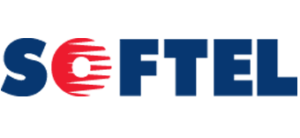Prepare for any Emergency with the Microsoft e911 Service Bot
Enhanced 911 (e911) is the enhanced 911 system in the United States used for calls seeking emergency assistance from fire, ambulatory or police services. Calls to 911 are routed through a Public Safety Answering Point, and the e911 solution identifies the location of the caller to route the call to the most appropriate local PSP, allowing for faster responses in a crisis.
Having the right e911 solutions in place within your business isn’t just an investment in the safety and security of your ecosystem; it’s an essential component of compliance. Every company should be using e911 services as part of their communications ecosystem, whether you’re running a hospital, university campus, or large office space.
In most states, the FCC requires that the carriers and interconnected VoIP providers linked to any business must meet with all 911 requirements. Unfortunately, managing and configuring your e911 locations when you’re investing in a digitally transformed business can be complex.
Addressing the Issue of e911 Services in Microsoft Teams
As a rising number of companies transition into the Microsoft Teams ecosystem for efficient communication and collaboration in today’s digital world, it’s crucial to ensure your system remains compliant. While Microsoft Teams does allow companies to configure and plan dynamic emergency calling plans, the process can be time-consuming and complex.
The Microsoft ecosystem offers dynamic emergency calling solutions for Microsoft Calling Plans, Operator Connect, and Direct Routing. This means regardless of which strategy you’re using to transform Microsoft Teams into your UCaaS environment, you can still leverage emergency calling services. However, there are some issues.
For instance, e911 information is often gathered manually over a multitude of documents, systems, and resources, making the process complex, error-prone, and difficult to audit. At the same time, it’s often extremely difficult to keep the information in your network topology up-to-date.
Microsoft Teams allows you to configure and route emergency calls based on the location of the Teams client. However, it’s up to you to define and optimize the network elements in your ecosystem. Keeping track of the information required to allow for a compliant e911 environment isn’t easy.
Many enterprises find organizing their information by location is subjective to a range of different factors, including different localization practices and working styles. For instance, someone using a Microsoft Teams-enabled device within your business may not always stay within the same environment at all times.
A highly flexible approach to the modern workplace, combined with the ever-changing needs of businesses, means information can change rapidly. This can be extremely problematic, as every change leads to another issue in preserving the safety of your team.
The Ultimate Intelligent Solution
SOFTEL, market leaders in intelligent technology and long-standing partners in the Microsoft ecosystem, has the solution companies need to protect their teams. With a Teams-native e911 location management app, you can gather data by location, and do all of the work to keep your systems up-to-date within Teams. This eliminates the need for multiple different software solutions and tools which need to be integrated to allow for accurate insights.
Through adaptive cards built into the e911 location manager, you can connect with targeted users in an emergency situation to provide information at speed, and gather crucial data. Collecting data in real-time ensures you can keep your e911 environment updated according to the latest compliance standards.
To ensure absolute accuracy, the e911 app leverages the power of Bing Maps, to validate location information quickly and effectively for each individual user. Users can validate their information through the Bing Maps app and update any facts through instant messaging. This allows for faster and more agile safety processes within any business.
Unlike the standard approach to managing e911 locations within Teams, which requires access to carefully-configured settings and a host of regular updates, the SOFTEL application is designed to save teams time and simplify the path to a safer workplace.
What’s more, the comprehensive control center created by SOFTEL ensures business leaders can maintain complete visibility over the process. It’s quick and easy to review and approve processes for changes submitted by local business admins.
What can the SOFTEL e911 Location Manager do?
In emergency situations, every second is crucial to the safety and survival of your teams. A streamlined solution for emergency calling is essential to protect your business, empower your employees, and maintain compliance.
With SOFTEL’s e911 location manager, companies can access a streamlined e911 information management ecosystem, saving you up to 75% of your time and effort in gathering and updating essential information. With auditable and authorized change and control of information submissions, delegation, and localization rules. According to SOFTEL customers, the use of these solutions increases accuracy by 95%!
With SOFTEL e911 location manager, companies can access:
- Standardized data collection and validation via Bing Maps (for confirmed accuracy)
- A simplified interface with submissions permitted via instant messaging
- Designated network contacts arranged by location
- Delegation for submissions and approvals
- Adaptive cards for target users
- Full control center for complete administrator management
- Fully auditable ecosystem for compliance
Local administrators can even manage the information available within their e911 system without needing privileged access to the Microsoft 365 environment, increasing security and paving the way for a higher level of compliance.
Simplify e911 Location Management
The SOFTEL app allows for a simpler, more streamlined approach to managing locations within an e911 solution. With the ability to perform all essential actions within Teams, organizations can easily delegate location information and management to a location admin point of contact. From there, the delegated location admin can query all current information via Teams IM.
Each location admin also has the freedom to manage their designated locations as necessary from within Teams, easily mapping locations using Bing maps. Location admins don’t need administrative access to the Microsoft Teams admin center to manage their locations or network information either.
What’s more, with a single Excel template, it’s possible to bulk upload huge amounts of data by sending an Excel file via IM into the app.




